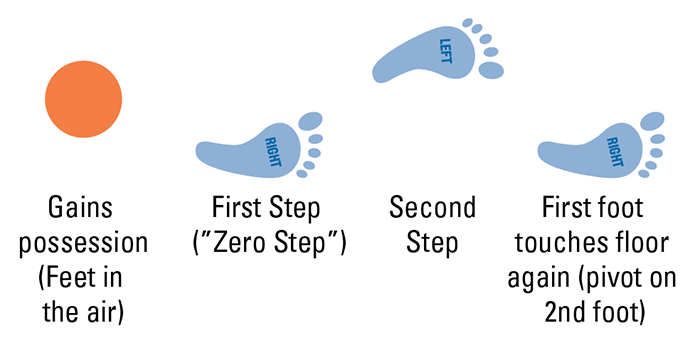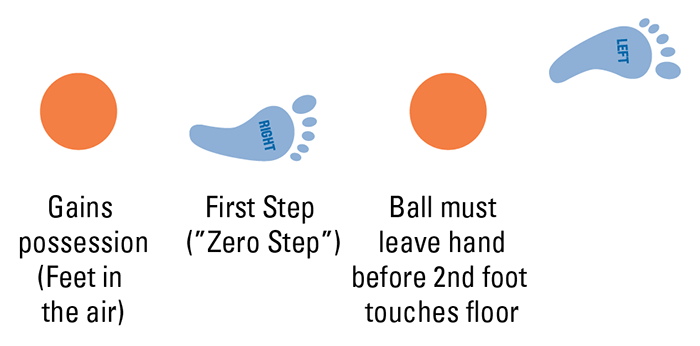- 2.1.1 Planning Practice - Introduction
- 2.1.2 Planning Practice - Setting goals
- 2.1.3 Planning Practice - Stages of a practice session
- 2.1.4 Planning Practice - Planning appropriate activities
- 2.1.5 Planning Practice - Duration of activities
- 2.1.6 Planning Practice - Using stations and group work
- 2.1.7 Planning Practice-Managing Physical and Psychological Load
- 2.1.8 Planning Practice-adding complexity
- 2.1.9 Review-Reflecting on practice
- 2.1.10 Creating a Positive Environment
- 2.1.11 Providing a Safe Environment
- Follow Up
- 2.3.1 Communicating with Athletes - Listen More, Speak Less
- 2.3.2 “Coaching on the Run” Technique
- 2.3.3 Providing Feedback
- 2.3.4 Changing behaviour with feedback
- 2.3.5 Conducting the Session - Organizing Players into Groups
- 2.3.6 Conducting the Session - Introduce the Activity
- 2.3.7 Conducting the Session - Observe and Give Feedback
- 2.3.8 Adaptive Coaching - Changing Activities to be more effective
- 2.3.9 Adaptive Coaching - Coaching Athletes of Varying Abilities
- 2.3.10 Adaptive Coaching - Including Athletes with a Disability
- Follow Up
- 3.2.1 Productive and reproductive approaches to coaching
- 3.2.2 Different approaches according to age of athlete
- 3.2.3 LTAD - making fun a focus
- 3.2.4 Games-based approach to coaching
- 3.2.5 Differing coaching styles to coaching
- 3.2.6 Communication styles
- 3.2.7 Holistic development - “athlete-centred” approach
- 3.2.8 Holistic development - teaching non-basketball skills
- 3.2.9 Holistic development - developing mindset and resilience
- 3.2.10 Holistic development - developing self confidence
- 3.2.11 Holistic development - developing self control
- Follow Up
- 2.7.1 Basic shooting - introduction
- 2.7.2 Basic shooting - teaching lay-up footwork
- 2.7.3 Basic shooting - foundation for the shot - balanced stance
- 2.7.4 Basic shooting - grip on the ball
- 2.7.5 Basic shooting - "top of the shot" - releasing the ball
- 2.7.6 Basic shooting - shooting off the dribble
- 2.7.7 Basic shooting - jump shot
- Follow up
- 2.8.1 The Importance of the First Step
- 2.8.2 Getting post position
- 2.8.3 Drop step
- 2.8.4 Drop step - counter move
- 2.8.5 Basics of perimeter offence
- 2.8.6 Drive fake moves
- 2.8.7 Shot fake moves
- 2.8.8 Catch and shoot
- 2.8.9 Penetrating off the dribble
- 2.8.10 Activities to practice offence in low post
- 2.8.11 Activities to practice perimeter offence
- Follow-Up
- 1.1.1 Matching up - basic principle of man to man defence
- 1.1.2 Distance from opponent
- 1.1.3 Defending one pass away
- 1.1.4 Flat triangle position
- 1.1.5 Stance - denial or open
- 1.1.6 Moving on the pass
- 1.1.7 Help defence - split line defence
- 1.1.8 Help defence - help to defend dribble penetration
- 1.1.9 Help defence - helping the helper / defensive rotation
- 1.1.10 Defensive communication
- 1.1.11 Transition defence
- 1.1.12 Full court man to man defence
- Follow up
- 1.2.1 Defending off ball screens – “lock and trail”
- 1.2.2 Defending off ball screens – “under”
- 1.2.3 Defending off ball screens – “through”
- 1.2.4 Defending off ball screens – “switch”
- 1.2.5 Defending on ball screens – “under”
- 1.2.6 Defending on ball screens – “over”
- 1.2.7 Defending on ball screens – “through”
- 1.2.8 Defending off ball screens – “switch”
- 1.2.9 Defending on ball screens – “double”
- Follow up
- 2.1.1. Motion offence - 5 out - dribble entry - hand-off
- 2.1.2 Motion Offence - 5 Out - Replacing the Cutter
- 2.1.3 Motion Offence - 5 Out - Purposeful movement - timing and spacing
- 2.1.4 Motion Offence - 5 Out - Ball Reversal
- 2.1.5 Motion Offence - 5 Out - Dribble Penetration - Receivers’ Principles
- 2.1.6 Motion Offence - 5 Out - Dribble Entry
- 2.1.7 Introducing Screens - 5 Out - Pass and Screen Away
- 2.1.8 Scrimmage Activity
- 2.1.9 Allowing Creativity in Decision Making
- Follow up
- 2.2.1 Off Ball Screens - Role of Screener - Setting the Screen
- 2.2.2 Off Ball Screens - Basic Cuts of Screen - Straight Cut
- 2.2.3 Off Ball Screens - Basic Cuts of Screen - Curl Cut
- 2.2.4 Off Ball Screens - Basic Cuts of Screen - Back Cut
- 2.2.5 Off Ball Screens - Basic Cuts of Screen - Flare Cut
- 2.2.6 Off Ball Screens - Role of Screener – Pop or Roll
- 2.2.7 Off Ball Screens - Down screens
- 2.2.8 Off Ball Screens - Up screens
- 2.2.9 Off Ball Screens - Back screens
- 2.2.10 On Ball Screens - Dribbler Options
- Follow up
- 2.3.1 Basic Fast Break - Starting the Break
- 2.3.2 Basic Fast Break - Running Wide Lanes
- 2.3.3 Basic Fast Break - Pass the Ball Ahead
- 2.3.4 Basic Fast Break - 2v1 Fast Break
- 2.3.5 Basic Fast Break - 3v2 Fast Break
- 2.3.6 Basic Fast Break - Moving into Offence
- 2.3.7 Activities to Practice Fast Break Principles
- Follow up
Level 1
2.1.8 Pivoting
A player that has the ball is limited in how they can move. They can only run if they are dribbling the ball (bouncing it with one hand) and once they finish dribbling they cannot start dribbling again. When they have the ball and are standing still a player may step with one foot, which enables them to change direction (e.g. to move away from a defender).
Pivoting is when a player stands still and steps with one foot . The foot that stays on the ground is called the pivot foot. To determine which foot is the pivot foot:
- If the player caught the ball with one foot on the ground – that foot is the pivot foot;
- If the player caught the ball with two feet on the ground – they may choose which foot to pivot on but once they make that decision they cannot then pivot on the other foot;
- If the player catches the ball in the air – whichever foot lands first is their pivot foot. If both feet land at the same time (a “jump stop”), the player may choose which foot to pivot on.
The pivot foot is important because:
- A player must start dribbling the ball before lifting their pivot foot;
- A player may lift their pivot foot as long as they pass or shoot prior to the foot being put back on the ground.
There are three common mistakes that players make when pivoting:
- They twist only the top half of their body instead of stepping with their feet (i.e. they are not pivoting but they should be);
- They stand with legs straight, which means that they have little balance;
- They bend down (looking at the floor) which both affects their balance but also makes it hard for them to see open team mates.
A pivot should be a controlled, balanced move performed with legs bent so that the player has good balance. A player can pivot either forwards or backwards (a backward pivot is also called a “drop step”) and before pivoting backwards they should move their chin to their shoulder so that they can see behind them and ensure that they are not moving into trouble.
In 2017, the rules were changed in relation to a player catching the ball whilst on the move (either from a pass or to end their dribble). This change has been described as a “zero step” or a “gather step” and applies in limited situation.
When getting possession on the move a player can now take two steps before stopping, shooting or passing.
The new rule allows them to take two steps to stop and this is shown in the diagram. However, they may stop after their first step. If they do this, the “old” travel rule applies – namely if they lift their first foot (right foot in the diagram left ) they must pass or shoot the ball before it returns to the floor.
Under the new travel rule, if the player wishes to immediately dribble they must release the ball before their “second step” (i.e. second foot touches the floor)
However, if they stop after their first step and then wanted to dribble, they must release the ball before lifting this first foot.
It is therefore recommended that the concept of “zero step” not be introduced until after the age of 14 as it can be confusing for young players to understand the difference between stopping with “one step” and stopping with “two steps”.

